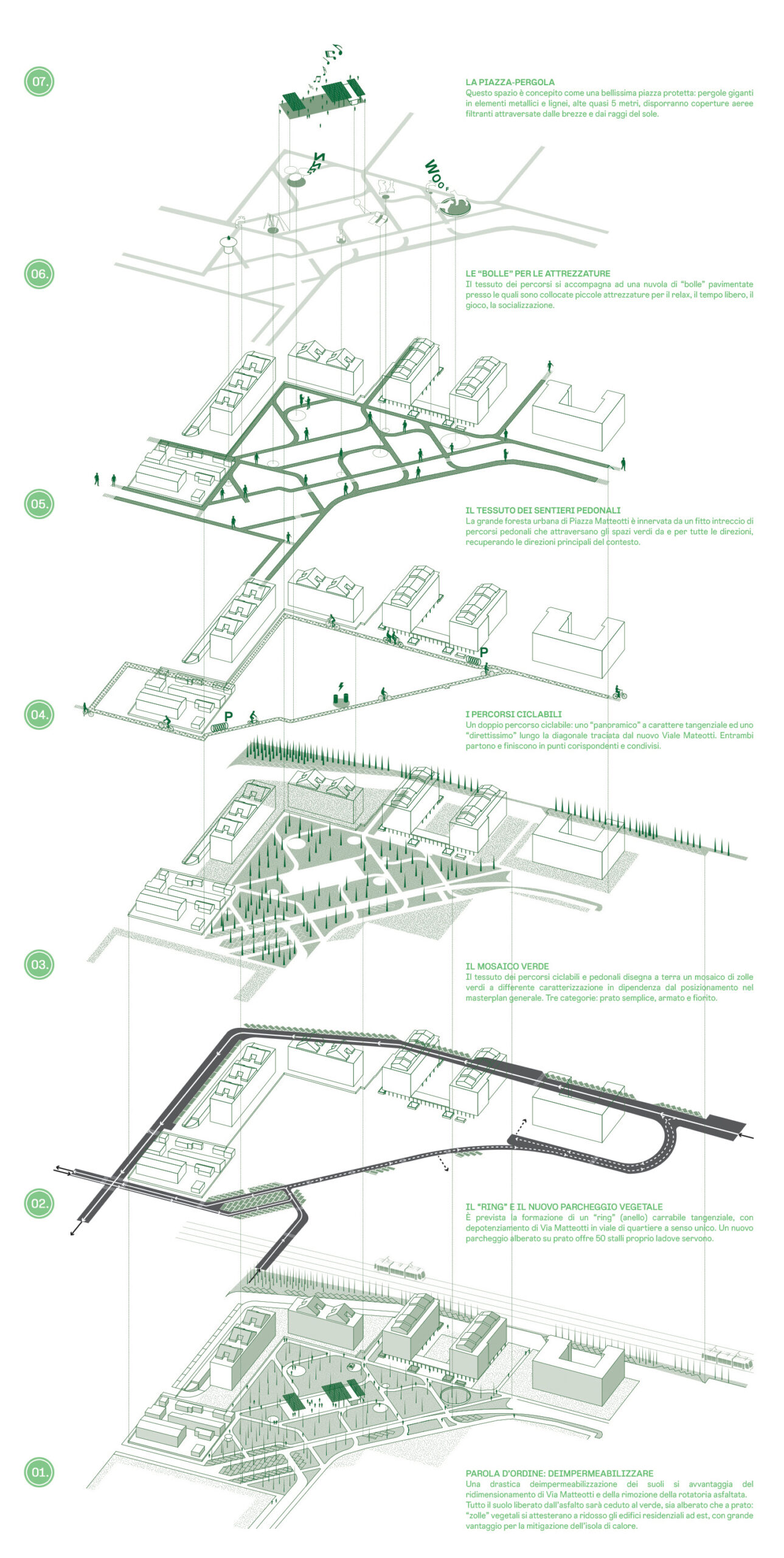We propose the construction of a large urban “forest” through the radical weakening of motorized flows on the diagonal stretch of Via Matteotti: we hypothesize to convey the largest volumes of traffic along a new “ring road” a little further north, through Via Roma (in the stretch near the bus station) and Filippo Meda, currently not communicating and separated, even if at the same height, by a partially destroyed wall that can easily be climbed over on foot.
What today are in effect two cul-de-sacs accessible from two opposite directions (Via Roma from the east, Via Filippo Meda from the west) – and which are presented as deregulated road areas where parking is organised in a disorganised and locally disconnected manner – will be able to cooperate in the formation of a new axis for one-way traffic flow from east to west.
The formation of the new “ring road” mobility axis seems to constitute a fundamental step in preparing the conditions necessary for the radical transformation of Piazza Matteotti into a new large green lung within which residents can return to (re)cognize each other, meet, talk to each other or simply relax surrounded by beauty.
The road section of Via Matteotti is therefore drastically reduced, and the original axis is transformed into a neighborhood avenue with limited traffic (with controlled access) and one-way in a northerly direction. This will allow residents to continue to easily reach private parking spaces within their properties with their cars, while at the same time partially reducing the load on Via Di Vittorio.
The road disappears as if by magic: abracadabra!
The large urban forest of Piazza Matteotti is innervated by a dense network of pedestrian and cycle paths that cross the green spaces to and from all directions. A matrix of organic ancestry that, recovering the main directions of the existing urban fabric, designs on the ground “paths” of sufficient width (width 250 cm) to guarantee an easy dynamic of the movement flows.
The pedestrian paths and cycle paths, as mentioned, generate an organic network of connections that carves out a pattern of green areas on the ground with different characterizations depending on the presence of trees, shrubs and flowers that grow there. The fabric of the paths is accompanied by a cloud of paved “bubbles” near which are placed small equipment for relaxation, free time, play, socialization.
Chronology: june 2024, competition
Architectural & Urban Project: Tomas Ghisellini, Giorgio Barba, Lucrezia Alemanno
Collaborators: Silvia Mirizio
Graphics: Giorgio Barba, Lucrezia Alemanno
Images: Visualspot










